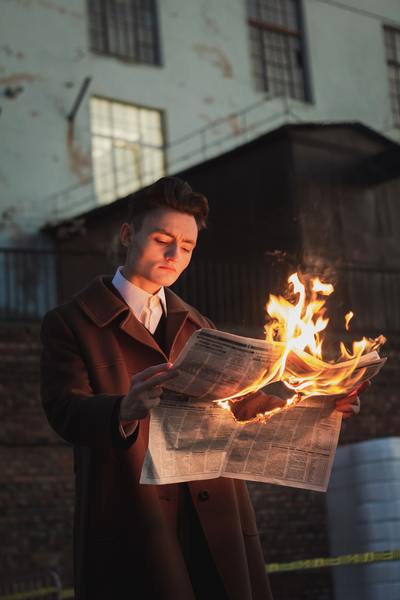I stumbled upon interesting discussions about plagiarism and gifted classes recently on Facebook. A Facebook friend asked if her readers had ever been accused of plagiarism when they were children. A large number of women said they had been. In many cases, the teachers assumed these students were lying about their abilities, and that they couldn’t possibly really be that smart. This was worse if the girl was a person of color. Teachers assumed their gifted students had actually copied their work rather than having written it themselves. In one case, a teacher had encircled a sentence and scrawled “Your words?” next to it as if she couldn’t believe her student could possibly string together 25 cent words. I was not surprised at the number of stories I read. Girls saw their aspirations doubted because some teachers couldn’t believe in their own student’s abilities.
I had never been outright accused of plagiarism, but I had been accused of forgery when I was in grade school. I went to a very strict Catholic school. When I was in fourth grade, the nuns regularly accused me of forging my mother’s signature on my homework. All students were required to have one of their parents sign their homework to prove they had done it on their own without resorting to cheating, plagiarism, etc. My signature looked a bit like my mother’s, but I did not forge it. My mom came in and gave the nuns the third degree. One nun in particular absolutely hated me, and she gave me one hell of a hard time. She used to pull me out of my seat and humiliate me in front of the class. This woman should not have been around kids. She continued to accuse me of forgery, but another talking-to by my mother cooled her jets. I transferred out of that school a year later due to severe stress and anxiety. I was only eight years old. I started fifth grade at the local public school.
Talk about going from the frying pan into the fire.
While I got along great with the students in Catholic school, I couldn’t relate to the kids in public school at all. I did not wear the latest fashions. I had frizzy hair. I carried a book bag – no one else did. That was a relic from Catholic school that I ditched soon after arriving at public school. My Catholic school did not participate in any gifted and talented programs. To my knowledge, parochial schools in general don’t do that. By the time I was in fifth grade, I had a tenth grade reading level. Talk about ostracism and feeling out of place!
While I couldn’t get along with the kids in elementary school, I got along great with the teachers which was a far cry from Catholic school. This same Facebook discussion continued with readers talking about their experiences in gifted classes. By the time I reached middle school, I was tested and the teachers recommended the gifted and talented program for me. I had a choice between creative writing and social work.
Guess which one I chose? 🙂
The creative writing classes were college level, and they were held at Johns Hopkins University every Saturday morning. They continued for several years. I finally met kids who were similar to me. I didn’t feel so alone anymore. I made some very good friends.
I had never met a college professor before, and when the guy with the tattered shirt, jeans, and long hair walked in and grabbed a full trash can to empty it, I thought he was the janitor. LOL He was the professor! While I did make new friends from schools all around the district, I continued to have difficulty getting along with my classmates. Sadly, I quickly learned to dumb down so I could fit in. It didn’t work, but the harassment wasn’t as bad as it could have been. Contrary to what these students told me, I wasn’t stuck-up and I didn’t think I was better than everyone else. In fact, quite the opposite. After hearing I’m not worth anything by kids who were supposed to be my peers, I thought I was useless, but I wanted to fit in. It’s a shame I felt it necessary to dumb myself down in order to survive. I did pick up one excellent survival mechanism – I developed a very good sense of humor and was quick with a funny come-back. The other kids finally started laughing with me rather than at me.
These were fascinating and eye-opening discussions. I wonder how many writers have experienced this same sort of loneliness? How many other writers were grade school class misfits especially if they were gifted? One person who is an educator pointed out that gifted does not necessarily mean high performance. Gifted kids put a lot of pressure on themselves. I was terrified of failing or getting even a B. I can trace back some of my Imposter Syndrome back to grade school and those nuns who didn’t believe I could possibly have written my own homework. I wonder if this kind of lack of faith and suspicion on teacher’s parts regarding gifted students could lead to Imposter Syndrome? It’s easy when you’re young to internalize severe criticism whether it’s right or wrong.
I’m thankful I had supportive teachers in public school who encouraged me in my creative writing, art, music, and theater interests. I thrived. In particular, I am indebted to my high school advanced English teacher and my drama teacher. They were the best teachers I’d ever had. I hope that gifted students today find supportive teachers and friends. Even one close friend who understands you makes a huge difference in your personal outlook on life.
———
Elizabeth Black writes in a wide variety of genres including erotica, erotic romance, horror, and dark fiction. She lives on the Massachusetts coast with her husband, son, and her three cats. Her new LGBTQ paranormal erotic shifter romance novel “Full Moon Fever” is now available for purchase at Amazon and other book distributors. Her collection of erotic fairy tales, “Happily Ever After”, will be released soon..
Web site: http://elizabethablack.blogspot.com
Facebook: https://www.facebook.com/elizabethablack
Twitter: http://twitter.com/ElizabethABlack
Amazon Author Page: https://www.amazon.com/author/elizabethblack
Newsletter: http://eepurl.com/b76GWD













